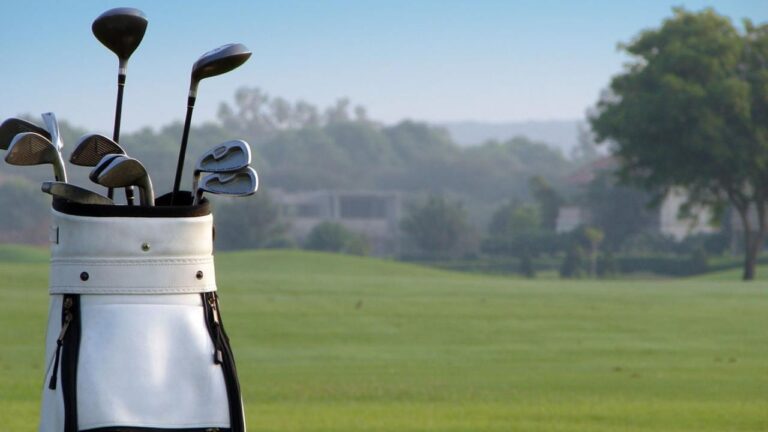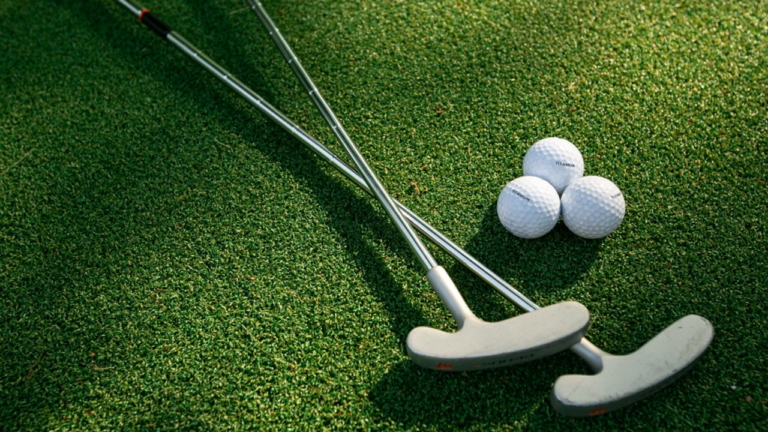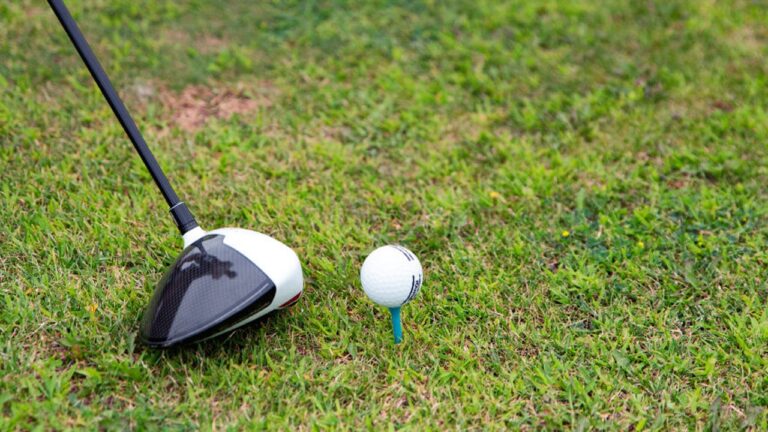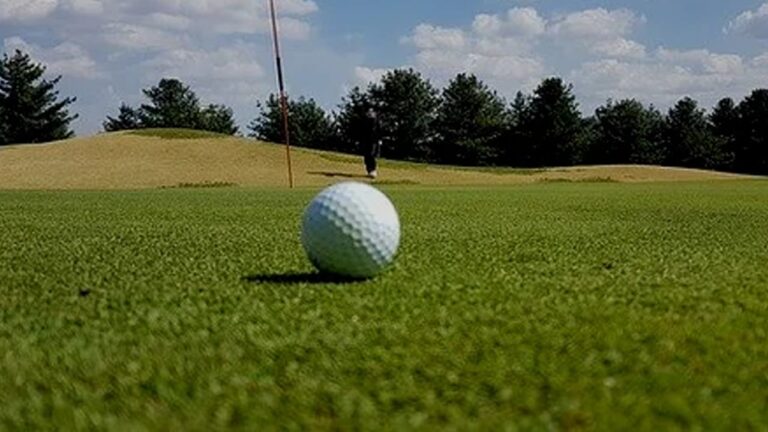How to Grip the Golf Club: Master Your Swing Today
Mastering the art of gripping a golf club is the cornerstone of a successful golf game, yet it remains one of the most overlooked skills by beginners and seasoned players alike. Whether you’re stepping onto the green for the first time or looking to refine your swing, understanding the nuances of a proper grip can dramatically improve your performance. Dive into our comprehensive guide to learn the secrets behind a flawless grip and unlock your full potential on the golf course.
Understanding the Basic Grip Types
Mastering the correct grip on your golf club is fundamental to improving your game. The grip is your only connection to the club, and thus, it directly influences the flight of the ball. There are three main grip types that golfers of all levels should familiarize themselves with: the interlocking grip, the overlapping grip, and the ten-finger (or baseball) grip.
The interlocking grip is where the index finger of the left hand (for right-handed players) and the little finger of the right hand interlock or hook each other. This grip is beneficial for players with smaller hands or those seeking a firmer grip connection. The overlapping grip, also known as the Vardon grip, involves placing the little finger of the right hand between the index and middle fingers of the left hand. This grip is favored by players with larger hands and offers a balance between control and comfort. Lastly, the ten-finger grip is where all ten fingers are placed on the club handle, similar to holding a baseball bat. This grip is often recommended for beginners, younger players, or those with less hand strength, as it promotes maximum leverage and control.
Each grip type has its unique advantages and can significantly impact your swing mechanics and ball trajectory. Experimenting with these grips and understanding which one suits your playing style is crucial for developing a consistent and powerful golf swing.
Choosing the Right Grip for Your Game
Choosing the right grip is a personal decision that can greatly influence your performance on the course. Factors such as hand size, strength, and personal preference play a significant role in determining the most comfortable and effective grip for any golfer. Practicing with different grips and consulting with a golf professional can help identify the grip that best suits your game, leading to improved control, accuracy, and confidence on the course.
| Grip Type | Characteristics | Suitable For |
|---|---|---|
| Interlocking Grip | Fingers interlocked, firm connection | Players with smaller hands, seeking control |
| Overlapping Grip | Little finger overlaps, balanced feel | Players with larger hands, seeking comfort |
| Ten-Finger Grip | All fingers on the club, maximum leverage | Beginners, younger players, less hand strength |
| Modified Interlocking | Variant of the interlocking, less interlock | Players experimenting between grips |
| Modified Overlapping | Variant of the overlapping, less overlap | Players seeking a hybrid grip solution |
Mastering the Correct Hand Placement
Hand placement on the golf club is a critical, yet often overlooked, element in developing a consistent and powerful golf swing. The way you grip the club can significantly affect the flight of the ball, influencing both direction and distance. Understanding and applying the correct hand placement isn’t just about holding the club; it’s about making sure your hands work together as a unified force.
The grip is the only point of contact between the golfer and the club, making it the foundation for the swing. A proper grip aligns the clubface with the golf ball, ensuring accuracy, and provides the leverage needed for power. There are three main types of grips in golf: the interlocking grip, the overlapping grip, and the ten-finger (or baseball) grip. Each golfer may find one grip more comfortable or effective than the others, but all grips should maintain certain fundamentals. The lead hand (the left hand for right-handed golfers and the right hand for left-handed golfers) should grip the club with the fingers, not the palm, with the thumb pointing down the shaft. The trail hand then complements this position, either linking, overlapping, or sitting beside the lead hand. The V’s formed by the thumb and forefinger of each hand should point towards the golfer’s shoulder, ensuring a square clubface at impact.
Consistency in hand placement allows for greater control over the club’s path and the face angle throughout the swing. By maintaining a steady grip pressure — not too tight or too loose — golfers can improve their swing’s reliability and efficiency. It’s crucial to regularly practice the grip to develop muscle memory, ensuring that this aspect of the swing becomes second nature.
Further Insights on Correct Hand Placement
Delving deeper into the nuances of hand placement, it’s important to recognize that minor adjustments can lead to significant improvements in your game. For instance, slightly rotating the hands towards the right (for right-handed golfers) on the grip can help fix a slice, while a slight rotation to the left can correct a hook. These adjustments modify the clubface’s angle at impact, helping to straighten the ball’s flight path.
Adjusting Grip for Enhanced Performance
Experimenting with slight grip adjustments can unlock new levels of performance on the course. While the foundational aspects of hand placement remain constant, small tweaks can yield substantial results. Golfers should not be afraid to adjust their grip under the guidance of a seasoned instructor, as these modifications can help overcome persistent issues in their swing. Through practice and patience, mastering the correct hand placement becomes a cornerstone of a successful golf game.
- Understand the fundamentals of grip types: interlocking, overlapping, and ten-finger.
- Practice the grip to develop muscle memory and ensure consistency.
- Adjust the grip pressure to maintain control without tensing the muscles excessively.
- Experiment with slight hand rotations on the grip to correct flight path issues.
- Seek professional guidance to refine your grip and overall swing technique.
Grip Pressure: Finding the Balance
Mastering the art of the perfect golf swing begins with understanding the nuances of grip pressure. It’s a component that often goes overlooked, yet it’s crucial for achieving both power and precision on the course. The right grip pressure can be the difference between a shot that soars gracefully towards the target and one that veers off course. Finding the balance in grip pressure is essential, requiring a blend of firmness and gentleness that might seem paradoxical to beginners.
The key to mastering grip pressure lies in the realization that too tight a grip can lead to tension throughout the arms and shoulders, restricting the fluidity of the swing. Conversely, holding the club too loosely can result in a lack of control, making it difficult to direct the ball accurately. The goal is to find a middle ground where the grip is firm enough to maintain control over the club during the swing but relaxed enough to allow for a smooth, natural motion. This balance can be likened to holding a small bird in hand – tight enough to prevent it from flying away, yet gentle enough not to harm it.
Practicing the right grip pressure is an ongoing process that benefits greatly from continuous self-awareness and adjustment. Golfers should pay close attention to their grip in different situations on the course, adjusting as necessary based on the shot they are facing. Over time, golfers will develop a keen sense for the ideal grip pressure, leading to improved performance and consistency. Remember, the perfect grip pressure is unique to every golfer, influenced by factors such as hand size, strength, and personal preference. Experimentation and mindfulness on the course are your best tools for discovering the grip pressure that works best for you.
Techniques to Improve Your Grip Pressure
- Use a grip trainer to build strength and muscle memory.
- Practice swinging with a towel under your arms to encourage a more relaxed upper body.
- Regularly check grip pressure throughout a swing, not just at the start.
- Experiment with different grip styles to find which offers the best balance of control and flexibility.
- Visualize holding something fragile in your hands to maintain a gentle, firm grip.
Adjusting Your Grip for Different Shots
The way you grip your golf club plays a pivotal role in the trajectory and distance of your shots. Mastering the art of grip adjustment can significantly enhance your ability to tackle various situations on the course. For starters, a stronger grip can help you close the clubface faster, which is beneficial for those struggling with a slice. Conversely, a weaker grip may be the solution for golfers who tend to hook their shots. It’s not just about correcting flaws; adjusting your grip can also adapt your shots to different weather conditions, such as using a stronger grip in windy conditions to lower your ball flight.
Another aspect to consider is the grip pressure. A common mistake among amateurs is gripping the club too tightly, which can hinder wrist hinge and ultimately reduce power and control. The ideal grip pressure should allow for a comfortable swing with maximum clubhead control. Experimentation is key as each golfer’s optimal grip pressure may vary slightly.
Lastly, the position of your hands on the club can influence shot outcomes. For instance, positioning your hands lower on the grip can facilitate a more controlled swing, ideal for precision shots like chipping around the green. Meanwhile, a higher hand position can increase leverage and, therefore, potential distance for tee shots.
| Shot Type | Grip Adjustment | Purpose |
|---|---|---|
| Slice Correction | Stronger Grip | To close the clubface sooner |
| Hook Correction | Weaker Grip | To delay the closing of the clubface |
| Low Shot (Wind) | Stronger Grip | Lower ball flight |
| Precision Shots | Lower Hand Position | More control and finesse |
| Long Drives | Higher Hand Position | Increased leverage and power |
Understanding and applying these grip adjustments can transform your game by providing you with the tools to adapt to any situation on the course. Remember, golf is not a one-size-fits-all sport, and what works for one player may not work for another. It’s essential to practice these adjustments to find what best suits your playing style. With time and experimentation, you’ll be able to intuitively adjust your grip for different shots, leading to more consistent and successful rounds.
Common Grip Mistakes to Avoid
Mastering the golf swing starts with a correct grip. A flawed grip can lead to a range of issues, from slicing the ball to missing power in your swing. One of the most common mistakes is gripping the club too tightly, which can restrict the natural movement necessary for a fluid swing. Conversely, a grip that’s too loose might result in the club slipping out of your hands during the swing.
Another frequent error is not aligning the hands properly on the club. Your lead hand (left hand for right-handed golfers, and vice versa) should be placed in a way that allows a few of the knuckles to be visible when you look down. The back hand should then complement this position, ensuring both hands work as a unified entity. Ignoring the alignment of the hands can lead to reduced control and accuracy, affecting the overall swing dynamics.
Additionally, golfers often overlook the importance of the grip size. Using a grip that’s too large or too small for your hands can significantly alter your swing’s effectiveness. This mistake can be subtle but has a profound impact on your ability to control the golf club and, by extension, your shots. Selecting a grip that fits your hand properly is crucial for maintaining consistency and precision in your swing.
Further Insights on Grip Techniques
- Understanding the interlocking vs. overlapping grips
- The role of grip pressure in swing mechanics
- Adjusting grip for different types of shots
- The significance of grip texture and material
- Customizing grip size for individual hand dimensions
Deeper Perspective on Grip Adjustments
Delving deeper into grip adjustments, it’s essential to consider not just the grip style but also how environmental factors like humidity and temperature can affect grip selection and performance. Recognizing and adapting to these conditions can elevate a golfer’s game and ensure that their grip technique remains effective regardless of external influences.
This discussion on avoiding common grip mistakes and exploring further into grip techniques and adjustments underlines the complexity and importance of the grip in golf. Whether you’re a beginner or an experienced golfer, taking the time to assess and refine your grip can have a transformative effect on your game. Remember, the grip is your only point of contact with the club; making it count is imperative for mastering your swing and enhancing your overall performance on the course.
Sarah Johnson is a golf enthusiast and betting expert with over a decade of experience in the sport. She provides insightful analysis and tips on golf betting, helping both novices and seasoned bettors make informed decisions. Her expertise extends to evaluating betting platforms, understanding odds, and crafting strategies for success. With a focus on enhancing your betting experience, Sarah combines her passion for golf with a deep knowledge of betting trends to guide you through the complexities of wagering on your favorite sport.







